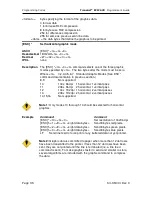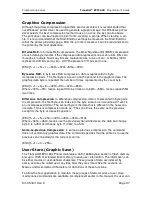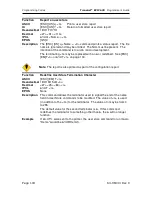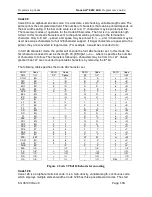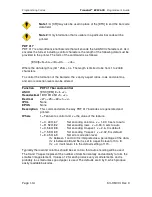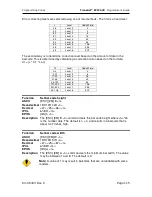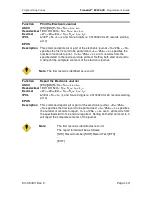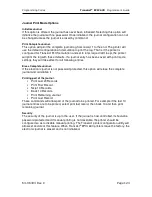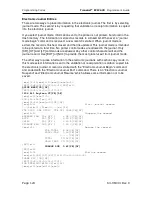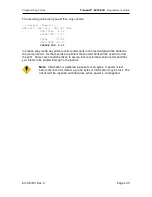
&&
&
'
&&
8 ,
!!
code defines the code set, Code A, B, or C that will be used to generate the barcode. The
TransAct
®
EPIC 630 allows the code set to be specified, or it can be select by the printer based
on the information in the data field.
To specify code set: [ESC] b <2> <Code>{information} [ETX]
If the first character in the data field <Code> is a start code as shown in Figure 3 below, the
printer will print the complete data field from the selected set. Due to space limitations, only ten
characters can be printed. The check digit is generated and printed by the printer. Characters
are also specified as shown in Figure 3.
To have the printer selected code set and automatically generate an optimal barcode, the value
of Code should be the length.
[ESC] b <2> <Length>{information}
If the first character <Length> is from 1 to 31, the printer will automatically select Code A, B, or
C depending on the data present. If the data is all numeric, the data can be printed as pairs.
This effectively doubles the amount of data that can be printed. The check digit is generated
and printed by the printer.
Note: If the first character is greater than <31> and not <135> through
<137>, the printer will discard the first character and print the data as
defined in Code A..
Space is defined as a <0>, which makes programming difficult and causes control character
conflicts for the printer. To solve the problem, the TransAct
®
EPIC 630 Printer subtracts 32 from
all characters that are to be included in the bar code. In the Code 128 definition, an ‘A’ is <33>;
however, the printer converts an ASCII ‘A’ (<65>) to a <33> internally. This sets Code 128C and
the start codes off by 32.
Barcode 128 consists of 107 unique symbols. 101 of the symbols take on different meanings
based on the start code or an embedded shift code sequence. Code stick A consists of
alphanumeric characters and ASCII control codes (see the table below). Code stick B consists
of Alpha numeric with lower case alpha, Code stick C consists of numeric pairs.
In automatic mode, any ASCII data from 0 to 127 could be entered. Values less than 32 will be
encoded as Code stick A NUL- US, values from 96 through 127 will be encoded from Code stick
B. Where ever possible numeric pairs will be encoded from Code stick C.
In the past, FNC1, FNC2, FNC3, and FNC4 have not been accessible to the programmer. The
EAN 128 barcode requires that FNC1 be made available. To provide EAN 128 compatibility, the
acceptable character range has been expanded by 10 to include the ability to specify FNC1,
FNC2, FNC3 and FNC4. In automatic mode, values of 130-132 will be accepted, however, the
resulting barcode may be unreadable.
128 Code
Value in
Decimal
Value in
Hex
FNC3
128
80
Summary of Contents for EPIC 630
Page 1: ......
Page 9: ......
Page 10: ...This page intentionally left blank...
Page 16: ...4 7 8 5 This page intentionally left blank...
Page 17: ......
Page 18: ...This page intentionally left blank...
Page 30: ......
Page 31: ...This page intentionally left blank...
Page 37: ......
Page 38: ...This page intentionally left blank...
Page 41: ......
Page 42: ...This page intentionally left blank...
Page 57: ...8...
Page 162: ...8 5 1...
Page 163: ...8 This page intentionally left blank...
Page 173: ...8 This page intentionally left blank...
Page 174: ......
Page 175: ......
Page 176: ...5 This page intentionally left blank...
Page 179: ...5 0 1...
Page 180: ...This page intentionally left blank...
Page 194: ......
Page 196: ......

